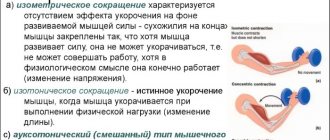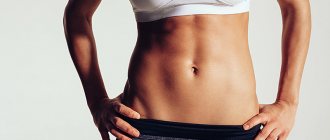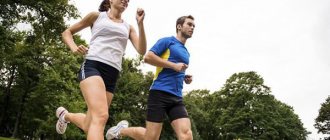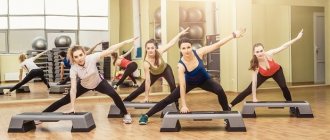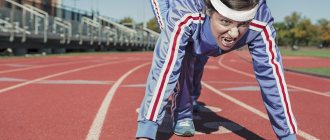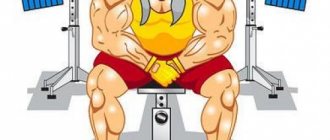The body's ability to perform stretching movements with a large amplitude is called flexibility. To develop this physical quality, many training complexes and isolated exercises have been developed. In physical education, this property is determined by the total mobility of all joints, ligaments and tendons.
What does flexibility depend on?
The stretching capacity of the body is limited by muscle fibers and their elasticity. Flexibility depends on several influencing factors. It is limited by antagonistic muscles and their tense state. When performing stretching exercises, the muscles are relaxed as much as possible to reduce resistance. Flexibility in physical education is a variable quantity. The sports indicator is influenced by constant factors and training conditions. In the period from 12:00 to 17:00, the mobility of joints, ligaments and tendons is higher than at other times of the day.
Air temperature matters. The colder it is, the less flexible it is. It is significantly increased by warming up. Flexibility depends on body temperature. After warming up in a sauna, bathhouse or solarium, joint mobility increases. The tensile capacity is influenced by the current functional state of the body. When tired, flexibility decreases. This occurs due to the difficulty of complete relaxation of muscle structures and a decrease in the tone of biological tissues that resist stretching.
Influencing factors include gender, heredity and features of the anatomical structure of the body. Girls' initial data for developing flexibility are better than men's. It is easier for women to achieve rapid progress when increasing joint mobility.
Recommendations
Useful stretching tips will help you during your workouts. The first is consistency. From the upper limbs to the lower ones, then the torso. If you do several approaches, then between them you need to take short breaks and relax.
Frequency of classes: 2-3 times a week, with at least a day of breaks between classes. Stretching three times a week is considered optimal: this is enough at the first stage to develop and maintain the acquired form.
Long breaks in classes have a very negative impact on your general condition, so it’s better not to do them. During training, it is recommended to use a wide arsenal of exercises so that the body does not get used to just one, and progress is more noticeable.
Types of flexibility and their meanings for children
The body’s ability to stretch and increase the range of movement of the limbs actively develops at the age of 7-14 years. By the age of 17, flexibility stabilizes. Training aimed at developing this physical quality improves your appearance and health. In a natural way, flexibility increases up to 14-15 years. Progressive dynamics are uneven and are determined by the type of joints involved in the movements.
The following types of flexibility are distinguished:
- active;
- passive;
- general;
- special;
- anatomical;
- excess.
In children, flexibility develops spontaneously. The tensile capacity of the hip joint reaches its maximum at 8-13 years of age. Then the process stabilizes, and from the age of 16 it slows down significantly. For further development, special stretching exercises are used. Boys and girls have a noticeably different rate of development of flexibility of the articular joints of the spinal column. This is due to differences in the anatomical structure of the body and physiological characteristics.
In boys, the peak increase in mobility occurs in 2 age phases - 7-11 and 14-15 years. In girls, the greatest progress is observed at 7-8 and 10-14 years old. Then the pace of development decreases until complete stabilization. Small joints progress faster than large ones. Specialized training programs allow you to develop flexibility. Female representatives naturally have 10% higher joint mobility. In old age, differences are erased and flexibility is equalized. Below are the varieties of this physical quality.
Active
Indicates the maximum range of motion of a specific joint. Active flexibility is tested by pressing your back against a gymnastic wall. In this position, raise one leg to the maximum possible height and hold it for as long as possible. The exercise is performed exclusively using your own muscle strength without the use of outside help or sports equipment.
The indicator of this type of flexibility allows you to get an idea of the stretching ability of the antagonistic muscles of the thighs and lumbar region. They perform multidirectional efforts. The exercise characterizes the strength properties of the protagonist muscles working in the same vector of tension. A similar idea of active flexibility is created by swinging in a half-split, performed through one’s own muscular efforts.
Passive
Flexibility in physical education is a concept that reflects the stretching ability of joints, ligaments and tendons. The passive variety involves performing amplitude movements under external influence.
It is created:
- training equipment;
- sports equipment;
- gymnastic equipment;
- athletic weights;
- assistant
When testing for passive flexibility, stand with your back to the gymnastic wall. The lower limb, raised to its maximum height, is supported by hands. The amplitude of movement of articular joints is limited by the extensibility of nearby muscle fibers and connective tissues. The high stretching ability of the body in this position indicates developed passive flexibility. The range of motion is always lower than when testing the active elasticity of the joints. The difference between the obtained values is called the flexibility reserve.
General
Characterizes the total mobility of all joints of the body. A high level of general flexibility is necessary for dancers, gymnasts, and acrobats. A well-developed physical quality allows you to perform complex pirouettes, dangerous movements and tricks with an amplitude inaccessible to an untrained person.
Special
Determines the degree of maximum mobility of a particular joint or group of joints. Special flexibility is important in some types of sports activities and martial arts. Well-developed physical characteristics ensure the successful implementation of technical techniques in difficult conditions. It helps fighters carry out defensive and attacking actions, avoiding joint injuries, ligament ruptures, and tendon sprains.
Special flexibility allows you to have a wide technical arsenal of techniques. Performing a given action with maximum amplitude ensures its efficiency and effectiveness. Special flexibility is extremely necessary when performing a kick to the head while standing on a supporting limb or while jumping. In the latter case, a larger number of joints, muscles and ligaments are simultaneously involved. The main load falls on the hip area when carrying out such a combat technique.
Depending on the sports discipline, the emphasis is on a specific group of joints. If, when grabbing the foot during sparring, the special flexibility of the defending fighter is higher than the attacking one, the chances of maintaining balance and carrying out a striking counterattack increase significantly.
Anatomical
Characterizes the limits of tensile capacity for each joint, muscle and ligament of the body, their total elasticity. Such flexibility is determined by the anatomical, biochemical and physiological characteristics of the body. It rarely manifests itself in everyday life and living conditions. Anatomical flexibility is becoming relevant in certain sports disciplines. When performing special exercises, performing complex techniques and tricks, its indicator can reach 95% or more.
Anatomical flexibility is of constant importance to the body. It is determined by the structural structure of the joint capsules, the shape of the muscles and ligaments. The indicator is influenced by the composition of connective tissues. Previously it was believed that they were composed of biochemical inert molecules. It has been proven that active physiological processes take place in connective tissues, which significantly affect the anatomical flexibility of the body. Such fibers have adaptive abilities.
They can change structurally by increasing the number and improving the quality characteristics of elastic tissues. Exceeding the anatomical flexibility of the body is dangerous and leads to injury.
Excessive
Loss of joints due to excessive mobility of anatomical stability. The risk of dislocations increases sharply. Excessive elasticity of muscle structures - they reach their maximum length with continued stretching, which leads to rupture of muscle fibers. Flexibility in physical education is an indicator of the mobility of individual parts or the entire body. Excessive muscle tension is considered one of the leading factors in sports injuries.
When the maximum stretch of muscle fibers is reached, training should be stopped and the intensity of physical activity reduced.
Quality of flexibility
The mobility parameters of the elements of the skeletal structures of muscle tissue depend on the structure of the articular joints, the level of elasticity of the ligaments, and the motor strength of the muscles. The anatomical characteristics of the bony protrusions are important.
Joint shapes:
| Geometric configuration | Structure and functioning |
| Globular | The most rolling stock with an infinite number of axes of rotation. For ease of classification, it is customary to distinguish 3 imaginary mutually perpendicular lines that run through the geometric center of the spherical joint. Such joints perform extension/flexion, rotation and circular movements. |
| Ellipsoidal | They differ in the transverse and anteroposterior axes of rotation. These joints include the radial articulation of the wrist, which is involved in flexion-extension, abduction-adduction and rotational movements of the hand. |
| Cylindrical and block-shaped | The joints have a single axis of rotation and are involved only in extension-flexion movements. This type of joint includes the knees and ankles. |
| Saddle-shaped | Moves back and forth and sways. In the human body, such joints are found only at the base of the thumb and are called carpometacarpal. |
| Flat | They do not have clearly defined axes of rotation. The anatomical design is devoid of heads and cavities. Flat surfaces slide freely relative to each other within the elasticity of the connecting tissues. |
Ball-and-socket joints have the highest level of anatomical flexibility. The saddle, flat and trochlear joints are endowed by nature with the lowest value of this physical quality. Mobility is directly proportional to the length and curvature of the surfaces of the articular capsule. Of the soft tissues of the human body, muscle fibers have the greatest stretching ability, which can increase in length by 30-50% of their original size.
The ligaments and tendons are much less elastic. An increase in body temperature provides a rush of blood, which increases flexibility. That is why, after warming up, the effectiveness of stretching exercises increases. The result lasts throughout the entire period of accelerated blood circulation.
Flexibility standards for schoolchildren
Control exercises are used as pedagogical tests to assess the degree of joint mobility in physical education lessons. The Ministry of Education of the Russian Federation has approved standards separately for boys and girls of different classes. A test to determine spinal flexibility in children 11-14 years old involves bending forward while sitting with legs apart. Girls are given “5” marks when their breasts touch the floor. Reaching the surface with the chin corresponds to a score of “4”. A “3” is given for touching the forehead.
Boys:
- “5” – touching the chin to the floor surface;
- “4” – forehead touch;
- “3” – touching the forehead with a fist placed on the floor.
The general flexibility of schoolchildren is determined using a jump rope. Jump through sports equipment for 30 seconds. The standard for boys to score “5” is 40 times, for “4” – 35, for “3” – 30. Girls 11-14 years old – 60, 50, 40 times, respectively.
Read also[edit | edit code]
- Stretching
- Development of flexibility
- Development of flexibility in children
- Flexibility exercises
- Exercises to develop flexibility
- Functional movement abilities: mobility and stability
- Motor physical qualities
- Strength abilities
- Physical qualities of muscles
- Speed (motor physical quality)
- Speed abilities
- Muscle strength
- Coordination of movements
- Coordination abilities
- Endurance
Sports and flexibility
High demands on the flexibility of athletes are made in complexly coordinated sports disciplines.
These include:
- acrobatics;
- gymnastics;
- synchronized swimming;
- diving;
- slalom;
- freestyle;
- figure skating.
Dexterity is in demand in martial arts, various types of wrestling, and team sports. In physical education, it is important when doing fitness and yoga. This quality of the body allows you to achieve good results, improve your health and form an impeccable figure. Without proper agility, it is impossible to succeed in football, basketball, and handball. Such disciplines provide for constant improvement of the functions of the motor analyzer and improvement of the coordination capabilities of the body.
Muscle-joint structures are strengthened, skin sensations and posture are improved. Flexibility in sports is necessary to improve orienting reactions, the ability to maintain balance during complex and rapid movements in space, especially in conditions of limited or absent support. Acrobatic and gymnastic exercises stimulate the musculoskeletal system. The training effect is to increase joint and ligament elasticity.
Flexibility in physical education.
These physical characteristics allow you to perform sports movements with greater amplitude. Each sport has different types of flexibility. In rhythmic gymnastics, high demands are placed on the spatio-temporal differentiation of strength indicators when performing techniques with paraphernalia under conditions of limited visual control. Ski jumping requires the athlete to have good functionality of the vestibular analyzer.
With relatively low energy costs, this sport is characterized by high emotional stress, which, if preparedness is insufficient, can lead to a decrease in overall performance.
Sources[edit | edit code]
- ↑ 1,01,11,21,31,41,51,61,7 Godik, M.A. Sports metrology. Textbook for physical institutes. cult / M.A. One year old. - M.: Physical culture and sport, 1988. - 192 p., ill.
- Gorsky, L. Training of hockey players: Trans. from Slovak / Preface G. Mkrtichana. - M.: Physical culture and sport, 1981 - 224 p., ill.
- ↑ 3.03.13.2 Zankovets, V.E. If you want to finish hockey, kill your body / V.E. Zankovets. — Minsk: A.N. Varaksin, 2014. - 160 p.
- ↑ 4,04,14,24,3 Zatsiorsky, V.M. Physical qualities of an athlete (basics of theory and methods of education) / V.M. Zatsiorsky. — 2nd ed. - M.: Publishing House "Physical Culture and Sports", 1970. - 199 p.
- ↑ 5,005,015,025,035,045,055,065,075,085,095,105,115,125,13 Nikonov, Yu.V. Physical training of hockey players: methodological manual / Yu.V. Nikonov. - Minsk: Witposter, 2014. - 576 p.
- ↑ 6,06,16,26,36,46,5 Savin, V.P. Theory and methodology of hockey: A textbook for students. higher schools, institutions / V.P. Savin. - M.: Publishing House, 2003. - 400 p.
- ↑ 7,07,17,27,3 Solodkov, A.S. Physiology of sports: Textbook / A.S. Solodkov, E.B. Sologub. — SPbGAFK im. P. F. Lesgaft. St. Petersburg, 1999. -231 p.
- ↑ 8,008,018,028,038,048,058,068,078,088,098,108,118,128,138,148,158,168,178,188,198,208,218,22 Kholodov, Zh.K. Theory and methodology of physical education and sports: Textbook, manual for students. higher schools, institutions / Zh.K. Kholodov, V.S. Kuznetsov. — 2nd ed., rev. and additional - M.: Publishing House, 2003. - 480 p.
- Baumgartner, T. Measurement for Evaluation in Physical Education and Exercise Science / T. Baumgartner, A. Jackson. — Dubuque, IA: Brown, 1987.
- ↑ 10,010,110,210,3 Essentials of strength training and conditioning. National Strength and Conditioning Association / Editors TR Baechle, RW Earle. — 3rd ed. - Hong Kong: Human Kinetics, 2008. - 642 p.
- ↑ 11,011,111,211,311,4 Matveev, L.P. Theory and methodology of physical education (general foundations of the theory and methodology of physical education; theoretical and methodological aspects of sports and professionally applied forms of physical education): Textbook, for the Institute of Physics. culture / L.P. Matveev. - M.: Physical culture and sport, 1991. - 543 p., ill.
- Zankovets, V.E. Periodization of testing in team sports / V.E. Zankovets, V.P. Popov // Science and modernity: collection of articles of the International Scientific and Practical Conference (June 5, 2015, Ufa), in 2 parts 4.1 / - Ufa: Aeterna. - 2015. - pp. 147-149.
- ↑ 13,013,113,213,313,413,513,613,7 Godik, M.A. Complex control in sports games / M.A. Godik, A. P. Skorodumova. - M.: Soviet Sport, 2010. - 336 p.: ill.
- ↑ 14,014,114,214,314,414,514,6 Fry, A. Measurement and Evaluation / A. Fry // Presentation 5: Essentials of Strength Training and Conditioning Multimedia Symposium / NSCA Certification Commission. - Lincoln, 2006. - 36 p.
- ↑ 15,015,115.2 Fitness testing / Topend Sports: the Sport & Science Resource. — Mode of access: https://www.topendsports.com/testing/index.htm. — Date of access: 12/24/2015.
- High-performance sports conditioning / Editor B. Foran. — Human Kinetics, 2001. — 376 p.
- ↑ 17,017,1 Central Scouting, - Mode of access: https://www.centralscouting.nhl. com. — Date of access: 07/14/2015.
- ↑ 18,018,1 Gledhill, N. Detailed assessment protocols for NHL entry draft players / N. Gledhill, V. Jamnik // Toronto: York University, 2007. - 28 p.
- Adams, GM Exercise Physiology Lab Manual. — 3rd ed. - Dubuque, IA: McGraw-Hill, 1998.
- American Alliance for Health, Physical Education, Recreation and Dance. AAHPERD Health-Related Fitness Test. Reston. —VA, 1980.
- American College of Sports Medicine. ACSM's Guidelines for Exercise Testing and Prescription / Franklin, BA, MH Whaley, ET Howley, GJ Balady // Philadelphia: Lippincott, Williams & Wilkins. — 7th ed. — 2006.
- Gould, D. Goal setting for peak performance. In: Applied Sport Psychology / D. Gould. — 2nd ed. — J. E. Williams, ed. Mountain View, CA: Mayfield. - 1993. - P. 158-169.
- Kordich, J. Evaluating your client: Fitness assessment protocols and norms / J. Kordich // NSCA Certification Commission Essentials of Personal Training Symposium Workbook Presentation 4, 18-19. - Lincoln, NE: NSCA Certification Commission, 2006.
- Nieman, DC Fitness and Sports Medicine / DC Nieman. — 3rd ed. - Palo Alto, CA: Bull, 1995.
- Stone, M. Weight Training: A Scientific Approach / M. Stone, N. O'Bryant. - Minneapolis: Burgess, 1987.
- Anderson, B. Flexibility testing / B. Anderson // NSCA J. - 1981. - No. 3 (2). — P. 20-23.
Safety rules for developing flexibility
There should be no pain when performing coordination exercises. They indicate that the maximum limit of elasticity and the possibility of injury have been reached.
During the training process, the following safety requirements must be observed:
- If discomfort occurs, exercise should be stopped. You cannot overcome the pain, since the risk of sprains, dislocations and tears increases sharply.
- During stretching training and performing paired exercises, maximum focus on the process and concentration are required. Excessive pressure, sudden jerks, and other technical violations are not allowed.
- Techniques that develop flexibility are performed with strict adherence to the established algorithm and systematicity. Otherwise, you may get injured without achieving the desired result.
- Long but rare performance of complex coordination tricks is less effective and safe than short but frequent approaches.
- The best physical conditioning for agility development comes from long cycles of exercise using running, low-position movements, and more.
- A good warm-up before performing a set of complexly coordinated exercises significantly reduces the risk of injury.
Psychological stress, poor health, and physical fatigue worsen athletic performance, negatively affect joint mobility and can lead to damage.
Before you start
Those who decide to start flexibility training should familiarize themselves with the rules:
- It is permissible to begin stretching exercises only after preliminary warming up of the muscles - warm-up: light running, jumping rope or exercise on an exercise bike.
- The exercises should be performed slowly, without sudden movements or jerks.
- The muscle should be stretched until a feeling of slight pain appears.
- You should exercise regularly.
- The order of the complex cannot be changed.
- Breaks between exercises should be minimal.
Methods for developing flexibility in children during physical education lessons, exercises
During school classes it is necessary for 10-15 minutes. perform a warm-up routine. Students are given cardio exercises to improve blood circulation and prepare the body to perform the main complex.
Useful:
- jumping rope;
- walking in place;
- light jogging;
- squats.
Flexibility in physical education is a physical quality, the development of which requires high-quality preliminary preparation of the body and functional systems of the body. Warming up reduces the likelihood of injury and provides a rush of blood to muscle tissue, ligaments, and joint capsules. Several methods for developing flexibility are used in school physical education lessons. They are approved by the Ministry of Education and are considered safe and beneficial for children. Lessons are often conducted in a playful way.
Volleyball and football, and other activities with the ball, significantly improve flexibility and develop body coordination.
Repeated stretch method
Involves increasing muscle and joint elasticity through a large number of repetitions. The amplitude of movements is gradually increased. For unprepared schoolchildren it is minimal. After 8-12 repetitions, it is brought to the limit in compliance with safety requirements. The number of cycles varies depending on the specifics of the movements, the intensity and direction of the stretching movements. High intensity exercises are performed at a fast pace.
The number of repetitions is calculated depending on the anatomical characteristics of the joint being developed and the expected result. Passive paired movements are performed at a slower rhythm with a similar dosage of physical activity. To increase the flexibility of the spinal column in schoolchildren, it is necessary to do 90-100 stretching exercises in equal cycles. For the shoulder joint, 50-60 is enough, and for the hip joint, 60-70.
Static stretch method
The training process is based on the dependence of the level of elasticity of biological tissues on the duration of the exercise. Before class, you need to relax as much as possible and statically stretch your joints for a given time period. The training position is maintained for 10-60 seconds. depending on the level of training. Static complexes are performed in single or paired mode. For this method of increasing flexibility, Hatha yoga techniques are most effective.
They are performed in separate series as a warm-up or in the final part of classes. Static stretching gives the best results when practiced daily for 30-60 minutes. Such complexes significantly increase the elasticity of tendons, muscle and ligament fibers, which limit the limits of mobility of articular joints. The most popular exercise is “Slide”, recommended for use in school physical education lessons.
A variant of the static asana of Hatha Yoga increases the elasticity of the muscle groups of the back and spinal column. The starting position is with emphasis on the palms and feet, called a plank. Slowly raise the hip joint, directing the chest towards the floor surface. Keep your knees straight and pull your tailbone up, creating extreme tension in the target muscles. The exercise time is from 30 seconds to 3 minutes.
Active-static stretching method
A combined method of increasing the maximum range of motion, involving synchronous tension of antagonistic muscles. Aimed at a targeted increase in the elasticity of a specific muscle. The technique is used in school lessons and in children's gymnastics sections. Flexibility in physical education is a quality of the body that lends itself well to improvement through active-static stretching of muscle fibers that limit the mobility of joints.
Depending on the target muscle group, various sets of exercises are used. One of them is bending forward while maintaining balance and freezing for a few seconds at the end point of the training movement.
The technique creates static tension on the muscles:
- backs;
- abdominals;
- shoulder girdle;
- hips;
- buttocks;
- ankle;
- knee area.
The exercise is easy to perform and highly effective, since it involves a large number of muscle groups. After bending forward, you need to keep your body motionless for 15-20 seconds. The feet are closed, the palms are placed on the shins. It is forbidden to bend the knee joints while bending the body.
Stretching method with alternating tension and relaxation of muscles
Synchronously contract and stretch antagonistic muscles to increase the elasticity of the target group. The method is especially useful for girls involved in rhythmic gymnastics. This sport requires good spatial coordination abilities and high levels of active flexibility. Light lifts from the lotus position are used, which creates alternating loads on the muscles of the hip and lumbar areas. When lowering, the target muscles relax.
Sitting on the buttocks, spread your legs bent at the knees as far as possible, trying to touch the floor surface with them. From this position, they rise slightly with the help of their hands and at the top point of the amplitude they freeze for 3-5 seconds. To master the split technique, deep lunges are used, which are characterized by periods of maximum muscle tension and complete relaxation. While standing, one leg is pushed forward and bent at the knee. The joint of the hind limb is placed in line with the heel of the front limb.
The exercise is performed statically or light springy movements are added. Lunges are done by strongly bending the knees. The buttocks should sag as much as possible and reach towards the floor.
Isometric method for developing flexibility
The essence of the technique is to lift your legs to the highest possible position and place them on a support with downward pressure. In this way, the isometric tension necessary for stretching the muscles is created. The exercise is performed for 20 seconds. Muscle tension not only stretches the fibers, but also protects them from damage while developing flexibility. With regular exercise in physical education classes or independently, a specific reflex is developed in the muscles.
This speeds up progress and reduces the likelihood of injury when overcoming the existing limit of mobility.
Exercises for hip mobility
Before these exercises, it is good to make several circular movements of the pelvis on soft knees to bring the joints into working condition.
- Stand straight, pull your right leg bent at the knee towards you. Your stomach should be toned. Try not to lean your body towards your leg, but rather pull your leg towards you, feeling the stretch along the back of your thigh. This exercise is also good for developing a sense of balance. Be sure to repeat it on the other leg.
- Leg rotations - also standing on one leg, bend the other at the knee and lift it towards the body and move it to the side, performing a circular movement. Try to keep your leg moving through its maximum amplitude. Make a few circles outwards, then inwards and repeat on the other leg.
- Swing your legs. This exercise is convenient to perform near a ballet barre or some kind of support at chest or waist level. Turn sideways to the support, grab it with your hand and start swinging the opposite leg. At first, the amplitude can be as natural as possible, then gradually begin to increase it. After this, stand facing the support and swing your leg from side to side. Repeat for the other leg.
